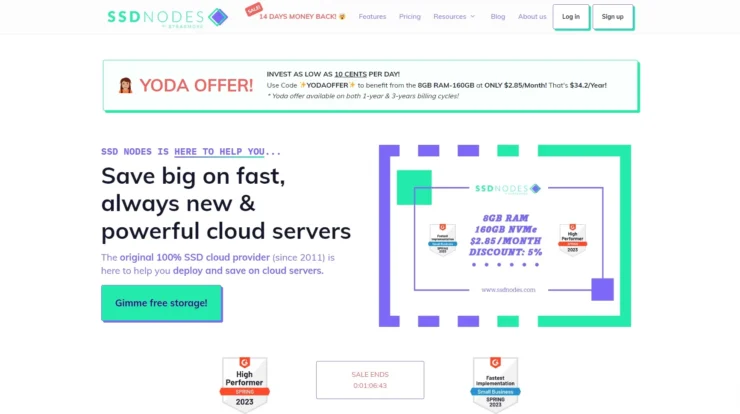
Building robust and scalable React applications demands a reliable hosting solution that seamlessly handles increasing traffic and data demands.
Choosing the right hosting platform for your React projects is crucial for performance, security, and user experience.
A poorly configured hosting environment can lead to slow load times, hindering user engagement and ultimately impacting your application’s success.
Conversely, a well-optimized hosting setup for React applications, like those built on Node.js, can significantly enhance performance, enabling smooth transitions and satisfying user interactions.
This comprehensive guide delves into the best hosting options for React applications, exploring a range of providers and their associated strengths and weaknesses.
We’ll dissect various factors, from server-side rendering (SSR) capabilities to deployment strategies, all critical in selecting the ideal hosting provider for your React project.
Understanding the intricacies of scalability and load balancing is paramount when evaluating React hosting solutions, as your application’s needs might evolve.
Selecting the best hosting for React JS depends on factors like your project’s specific requirements, budget, and the desired level of technical control. This analysis will empower developers to make informed decisions based on their unique application needs.
So, dive in, as we uncover the key characteristics to consider when choosing the best hosting platforms, ultimately guiding you toward a smooth and powerful deployment for your React-powered applications.
Choosing the Right Hosting for React Applications
Selecting the optimal hosting platform for React applications is a crucial step in guaranteeing a seamless user experience and ensuring application scalability.
The effectiveness of your React application hinges significantly on the performance and reliability of its hosting infrastructure.
Choosing the ideal hosting solution impacts several facets of your React application, including speed, security, and cost-effectiveness.
A robust hosting environment plays a vital role in supporting the demands of a React application, particularly those involving heavy data or user traffic.
This aspect of building React applications often requires careful consideration of several critical factors, such as server resources, data storage, and deployment strategies.
Modern React applications, often coupled with server-side rendering (SSR) for enhanced performance, necessitate hosting solutions capable of handling complex requests and large datasets efficiently.
Different React hosting providers offer diverse features and pricing structures, which must be evaluated according to the specific needs of the application.
Considerations such as anticipated traffic volume, application complexity, and budget play a significant role in the selection process for the best hosting for React.js.
The choice of hosting platform significantly affects the application’s ability to handle peak loads and maintain optimal performance under pressure.
For example, a hosting provider with robust scaling capabilities can ensure uninterrupted service during periods of high user activity.
Ultimately, the best hosting for React.js will be a reliable and scalable solution that meets the unique requirements of the application and anticipates potential future growth.
Selecting a hosting provider compatible with the chosen React development environment and deployment method is essential for seamless integration and efficient operations.
Different hosting providers offer diverse features, including customizability, server specifications, and managed services, which all need to be weighed against the specific requirements of the React application.
Performance Considerations in React Hosting
Optimizing performance is a primary concern for React applications, as fast loading times are critical to user engagement.
A slow-loading React application can lead to frustrated users and a negative impact on the application’s success.
Choosing hosting for React applications involves evaluating factors such as server response times, network latency, and infrastructure scalability.
High-performance hosting solutions are essential to maintain optimal user experiences, particularly for applications reliant on server-side rendering (SSR) or frequent data interactions.
Modern hosting providers often offer various features tailored to enhance the performance of React applications, including content delivery networks (CDNs) and optimized server configurations.
Utilizing a CDN can significantly reduce latency by caching static assets closer to users, ensuring faster load times and a more responsive application.
The choice of hosting platform significantly impacts the responsiveness and performance of React applications, especially when dealing with complex UI elements or intensive computations.
The hosting environment influences the application’s ability to handle fluctuating user loads and maintain smooth transitions.
A hosting solution optimized for React’s needs will support fast rendering and dynamic updates, ensuring an immediate and engaging user experience.
Several hosting providers specialize in providing robust infrastructure for handling the specific needs of React applications, offering scalable resources and tailored solutions.
For developers working with large datasets, or intricate React components, the right hosting infrastructure is paramount for optimal performance.
Scalability is a crucial factor for accommodating future growth and expanding user bases for React applications hosted online.
Understanding the potential for traffic spikes and the capacity of the chosen hosting platform for future growth is critical when selecting the optimal hosting solution.
Implementing proper caching strategies and leveraging CDN services are vital for minimizing load times and optimizing React application performance.
Employing a suitable hosting infrastructure is key for React applications seeking to deliver a frictionless user experience.
Responsive hosting solutions are essential for maintaining application performance as the number of users or data volume increases.
Choosing a hosting plan that can dynamically adapt to changing application demands is vital for scalability and long-term success.
Different hosting options offer varying degrees of scalability, impacting the application’s ability to handle future growth and increased user traffic.
Selecting a scalable hosting platform is crucial for ensuring that a React application can handle growing user loads without significant performance degradation.
Understanding the potential for traffic spikes is key to selecting a hosting plan that can accommodate future growth in a responsive manner.
Scalability and Performance of React Hosting Solutions
Scalability is a critical factor when choosing the best hosting for React applications, as they can experience fluctuating traffic demands, particularly with growing user bases or during promotional periods.
A reliable hosting platform must be able to seamlessly handle these peaks in traffic without compromising performance or responsiveness.
This means the hosting infrastructure should be designed to dynamically adjust resources—processing power, memory, and bandwidth—in response to real-time demands.
A poorly scalable hosting solution can lead to slow loading times, unresponsive interfaces, and ultimately, a frustrating user experience. This can result in lost customers and a negative impact on the application’s overall success.
For React applications, which often rely on complex front-end interactions and potentially large component libraries, efficient loading speeds are paramount to user satisfaction.
The optimal React hosting solution must offer a robust infrastructure capable of accommodating increasing user requests and delivering seamless page rendering.
High-performance hosting plays a pivotal role in ensuring a smooth and engaging user journey for React applications, especially with large datasets or intricate UI elements.
Choosing a hosting provider with a proven track record of handling fluctuating traffic patterns is crucial for long-term success.
Features like automatic scaling, serverless functions, and content delivery networks (CDNs) are integral to achieving optimal performance and scalability for React applications.
A strong content delivery network (CDN) is particularly important, as it can effectively distribute static assets (like images and JavaScript bundles) across multiple servers globally.
This caching mechanism significantly reduces latency, ensuring faster loading times for users worldwide, enhancing the overall user experience, and boosting SEO rankings.
Modern React applications often rely on APIs and third-party services. Consequently, the hosting provider should support seamless integration with such external services without impacting performance.
A robust hosting platform for React JS applications should be equipped with the necessary tools to monitor performance metrics and identify potential bottlenecks.
This allows for proactive optimization and swift resolution of issues, guaranteeing a high-quality user experience.
In the context of React development, the hosting solution needs to efficiently handle the various complexities of these applications, particularly in relation to code size, dynamic rendering, and potential external API dependencies.
Finally, an ideal React hosting solution must offer excellent documentation and responsive customer support.
This support will be critical in resolving any issues that may arise and provide guidance on optimizing the hosting environment for specific React application needs.
Scalability and Performance for React Applications
A robust hosting solution for React applications must accommodate anticipated growth and ensure optimal performance, regardless of traffic fluctuations.
Scalability is crucial for handling increasing user loads and data demands, ensuring a seamless user experience.
Choosing a hosting provider that offers scalable infrastructure is paramount for React applications, especially those aiming for high user engagement and anticipated growth.
Performance directly impacts user satisfaction and search engine rankings. Fast loading times are essential for a positive user experience and encourage engagement. A good hosting platform for React should provide optimized server resources, efficient caching mechanisms, and reliable content delivery networks (CDNs) to deliver web pages rapidly.
Different hosting options cater to various performance needs and budgets. For example, cloud-based hosting often provides greater scalability and flexibility, whereas dedicated servers offer more control and potentially higher performance, but come with a higher price tag. For a complex React application with a potential for massive traffic, a cloud-based hosting provider offering automated scaling features is a crucial consideration.
Optimizing the React application itself also contributes to performance. Code optimization, image compression, and careful use of third-party libraries can significantly enhance loading times. Choosing a hosting provider that prioritizes speed and offers tools for optimizing your React application will allow for effective scalability and performance.
This focus on scalability and performance within a React hosting environment is essential to ensuring a reliable, efficient, and user-friendly experience. Poor performance from an overloaded server can severely impact user engagement with a React application and damage its reputation.
The right hosting infrastructure for React allows the application to grow and respond efficiently to increasing traffic and demands. The ability to seamlessly scale and maintain top-tier performance translates directly into a positive user experience and the success of the application.
Therefore, when selecting a hosting provider for your React application, meticulously evaluating its scalability features and performance characteristics should be a top priority. A well-tuned hosting environment is indispensable for a smooth-functioning and successful React application.
Choosing the optimal hosting platform for your React applications is crucial for performance, scalability, and user experience.
This article has explored the key factors to consider when selecting the best hosting for React JS, highlighting the importance of speed, reliability, security, and scalability.
We’ve seen how different hosting options—from cloud platforms to managed services—cater to varying project needs, from small personal projects to large-scale enterprise applications.
Ultimately, the best hosting for React JS depends on factors such as your project’s complexity, expected traffic volume, budget constraints, and technical expertise.
A robust and responsive hosting environment ensures that your React application performs flawlessly, delivering a seamless user experience and maximizing engagement. A well-optimized hosting solution for React JS directly contributes to positive user feedback, improved conversion rates, and overall success for your web application. Choosing the right React hosting significantly impacts the functionality, speed, and security of your application. By carefully considering the presented options and tailoring your selection to your specific project needs, you can effectively leverage the power of React and build a highly performant and accessible online presence.






